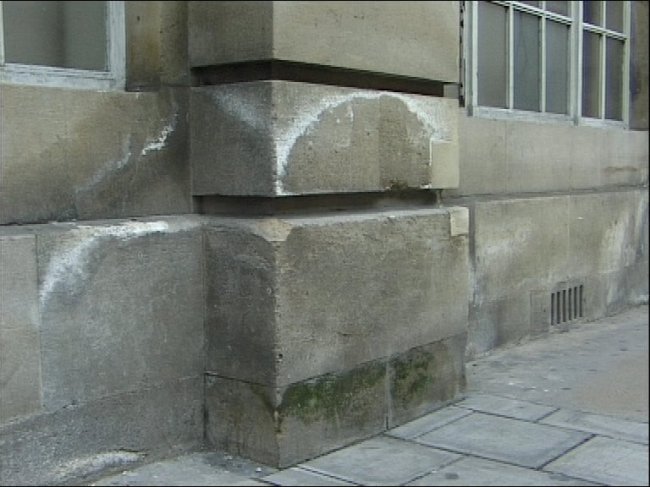Tempering heating
Contents |
[edit] Introduction
Tempering heating is a form of convection heating that is installed either into - or adjacent to - walls to moderate the temperature and moisture levels inside. This type of radiant heat distribution was introduced in 1982 by the Bavarian State conservation office.
As a form of climate control, tempering heating developed as a method for managing rising damp problems in museums where the moisture and its related consequences (such as mould, salt, bacteria and so on) could damage artwork and other vulnerable items in museum collections.
Tempered heating can also be an effective method for heating places of worship, fortresses and other historic buildings constructed from stone.
[edit] Radiant heating
A tempered heating system generates a steady flow of warm air that travels through a collection of looping tubes in the shell of the building. This approach reduces the capillary distribution of all forms of dampness while heating the room at the same time.
This type of radiant heating system warms surfaces that then in turn re-radiate heat and warm air adjacent to them by convection. This allows heat from a radiant source to distribute through a space. Because it is mainly directly heating through radiation, rather than heating the air (as in convective heating), it can be more efficient, particularly in large spaces, in spaces with poor insulation or in unenclosed or semi-enclosed spaces.
A tempered wall radiant heating system tends to be a low-temperature system spread over large surface areas. It heats certain walls continuously throughout the year, while others are only heated when colder temperatures are expected.
[edit] Benefits and drawbacks
Compared to other forms of heating, radiant heating (depending on the system used) can be:
- More healthy, separating heating from ventilation, and so reducing problems associated with dust, pollen and other pollutants.
- More durable.
- More comfortable, giving a more even temperature distribution.
- Space saving and unobtrusive.
- Quieter.
- Less expensive to run in certain situations. Low temperature systems in particular can run at a lower overall temperature than conventional heating systems whilst still achieving comfortable conditions.
- Easier to maintain.
- More directed.
Radiant heating also has less impact on air moisture content than other heating methods. However, depending on the system adopted:
- High temperature electric radiant heaters can be expensive to run.
- It can impose restrictions on floor and wall coverings.
- It can be expensive to instal.
- It can be less effective at cooling, and there can be condensation issues.
- There can be poor familiarity amongst designers and installers.
- It can be difficult to retrofit.
- It can be difficult to repair.
[edit] Related articles on Designing Buildings Wiki
- Air handling unit.
- Building services.
- Capillary action.
- Defects in stonework.
- Heating.
- Heat pump.
- Heat recovery.
- Heat stress.
- Heat transfer.
- HVAC.
- Radiant heating.
- Radiation.
- Retrofit and traditional approaches to comfort.
- Rising damp.
- Thermal comfort.
[edit] External references
IHBC NewsBlog
Images from inside a Grade II listed hotel show the scale of its collapse
The Corbett Arms in Tywyn has fallen into serious disrepair.
Old Sarum fire in listed (& disputed) WW1 Hangar - Wiltshire Council has sought legal advice after fire engulfed a listed First World War hangar that was embroiled in a lengthy planning dispute.
UK Antarctic Heritage Trust launches ‘Virtual Visit’ website area
The Trust calls on people to 'Immerse yourself in our heritage – Making Antarctica Accessible'
Southend Council pledge to force Kursaal owners to maintain building
The Council has pledged to use ‘every tool in the toolbox’ if urgent repairs are not carried out.
HE’s Research Magazine publishes a major study of the heritage of England’s suburbs
The article traces the long evolution of an internal programme to research 200 years of suburban growth
IHBC Context 183 Wellbeing and Heritage published
The issue explores issues at the intersection of heritage and wellbeing.
SAVE celebrates 50 years of campaigning 1975-2025
SAVE Britain’s Heritage has announced events across the country to celebrate bringing new life to remarkable buildings.
IHBC Annual School 2025 - Shrewsbury 12-14 June
Themed Heritage in Context – Value: Plan: Change, join in-person or online.
200th Anniversary Celebration of the Modern Railway Planned
The Stockton & Darlington Railway opened on September 27, 1825.
Competence Framework Launched for Sustainability in the Built Environment
The Construction Industry Council (CIC) and the Edge have jointly published the framework.















Comments
Most tempered wall heating use hydronic emitters ie. hot water like floor heating but embedded in the wall.
Most of the distribution is by radiant heat 80% , convection currents 20% max. Its like when you are sking the air temp is 0C or less but the (directional) radiant heat of the sun keeps you warm.
Tempering wall heating system pdf
https://drive.google.com/file/d/0B9EBEHVfQ1BlUXEwYjVpRkRnUEk/view?usp=sharing